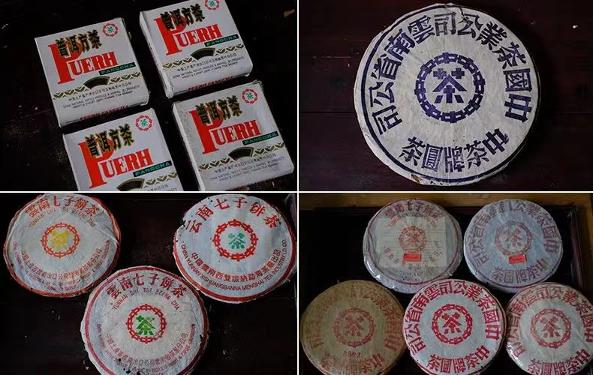Why is pu-erh pressed into cakes and not stored loose?
Pu-erh is one of the most unique types of tea, which only gets better with age. Many people, when they first encounter this tea, wondered: why is pu-erh more often found in pressed form (cakes, bricks, tochas), and not in loose form? The reasons for this are related to both history and the practical aspects of storing and fermenting tea. Despite modern technologies that allow the production of loose pu-erh, the shape of pressed cakes remains unchanged. And pu-erh is more often found on sale in pressed form, for example, in the form of cakes or bricks, and loose pu-erh is less common. We will talk about the reasons for pressing pu-erh into cakes in this article.
Historical reasons for pressing puerh
Pressing Pu'er tea dates back to ancient times, when tea was transported over long distances along the Tea Road to Tibet and other regions. Transporting loose tea was inconvenient and resulted in large losses due to crumbling. Pressed cakes or bricks allowed for compact packaging and efficient transport of large volumes of tea on pack animals. In addition, the standard weight of one cake (357 grams) and the traditional formation of bundles of 7 cakes ("qi zi bing") made it easier to calculate when trading. Pressing also allowed more tea to be transported, and it was noted that pressed tea better retains aroma and taste, especially Sheng Pu'er.

Improving the quality of tea by pressing
In addition to the convenience of transportation, pressing has a positive effect on the taste and aroma of puer. Puer is a tea that changes and improves over time. Pressed tea oxidizes more slowly than loose tea, since the smaller surface area of contact with air slows down the oxidation process, but speeds up the fermentation process. This allows the tea to develop evenly and retain complex flavors.
Why does pressed puerh store better?
During storage, pu-erh undergoes natural fermentation and oxidation processes. The main factors influencing these processes are humidity, temperature, oxygen and light.
-
Moisture – pressed tea absorbs and evaporates less moisture, which helps the fermentation process proceed evenly and preserve aroma and microflora.
-
Temperature – less air penetrates into the pressed tea, ensuring the stability of microorganisms.
-
Oxygen and light – less exposure to air slows down the oxidation of polyphenols, ketones and chlorophyll, improving the shelf life of the tea.
Of course, for good fermentation the initial quality of the raw materials and the skill of processing are important.
Cultural and aesthetic significance
The pressed forms of puer, such as round cakes and square bricks, carry a philosophical meaning. In Chinese culture, a circle symbolizes heavenly harmony, and a square symbolizes stability and earth. Thus, the shape of the tea reflects the ancient philosophy of "heaven and earth."
Puer as a collectible
Collecting puer is not only a pleasure, but also an investment. Over time, tea becomes more valuable, especially pressed tea.

-
Quality – pressed puer is more hygienic, has a rich taste and fewer astringent notes due to the evaporation of volatile substances.
-
Space saving – pressed tea takes up less space and is convenient for storage.
-
Aesthetics – Puer in the form of cakes and bricks is easier to store, which makes it attractive to collectors.
-
The finished product - pressed tea has its own packaging than most loose tea. The packaging indicates the manufacturer, batch, production date and the raw material that was pressed.
Pressing puer is not just a tradition, but a well-founded decision that improves the transportation, storage and quality of tea. Thanks to pressing, puer retains its best properties for decades, turning into a real “drinking antique”. That is why, if you want to enjoy real aged puer, pressed forms are the best choice. So next time, enjoying a cup of puer, remember that its shape is not an accident, but the result of centuries of experience.
- Comments
- Vkontakte






